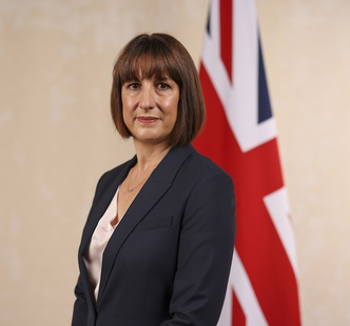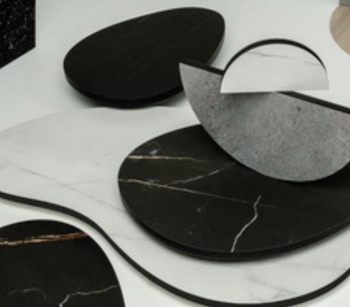Primary non-rechargeable batteries
Contents |
[edit] Introduction
A primary battery is a non-rechargeable, single-use battery as opposed to a secondary cell that can be recharged. A primary battery converts chemical energy into electrical energy by means of an electrochemical process. The electrochemical process that occurs is spontaneous Oxidation-Reduction (redox) this is where both a reduction reaction and an oxidation reaction take place at once. The earliest electrochemical cells were called wet cells as electrodes were submerged in a solution, later and more modern primary cells are more commonly dry cells.
A secondary or rechargeable battery acts as a galvanic cell when it is discharging, as it is converting chemical energy to electrical energy in a redox reaction but acts as an electrolytic cell when it is being charged as it is converting electrical energy to chemical energy. Electrolysis is the process by which ionic substances are broken down into simpler substances when an electric current is passed through them, thus recharging the battery's electrical potential.
In a redox reaction, electrons accumulate on the oxidation electrode (anode) and provide a negative potential, whilst a reduction process occurs at the reduction electrode (cathode), where a positive potential develops. The two electrodes are connected (called a salt bridge), so electrons flow from the oxidation electrode to the reduction electrode in an outer circuit due to the difference in potential between them, this produces an electric current.
[edit] Development
This type of primary cell where chemical energy produced in a redox reaction is converted to electrical energy is called either a galvanic or a voltaic cell and normally a wet cell. It is so-called firstly after the scientist Luigi Galvani (1737 – 1798) the pioneer of bioelectromagnetics who discovered that a frog's leg contracts when two different metals in contact touch different parts of the muscle, he initially named this animal electricity. Alessandro Volta later created the same effect using non-biological materials to challenge the animal electricity theory with his own metal-metal contact electricity theory, he is attributed as the inventor of the first electrical battery and this approach formed the basis of the modern-day primary battery that is still in use today.
In 1836 John Frederic Daniell, a British chemist and meteorologist, invented an improved primary cell called the Daniell cell. It consisted of an earthenware container filled with sulfuric acid and a zinc electrode immersed into a copper pot filled with a copper sulfate solution. This cell, which improved on other cells was itself improved on by the gravity cell invented in the 1860s by Frenchman Callaud.
The general-purpose primary zinc-carbon cell as is commonly used today stemmed from what was known as known as the Leclanché or dry cell, after the French engineer Georges Leclanché who invented it in 1866. This battery comprised a zinc alloy sheet containing small amounts of lead, cadmium, and mercury, a saturated aqueous solution of ammonium chloride, and impure manganese dioxide blended with carbon black and electrolyte formed around an electrode. It remains the basic design of the zinc-carbon dry cells available today with variations such as the zinc chloride battery.
Alkaline as opposed acid-based batteries were first developed by Waldemar Jungner in 1899, and, also separately by Thomas Edison in 1901. Showing greater safety and power potential, the Canadian engineer Lewis Urry invented the modern alkaline dry battery in the 1950s, which uses a zinc manganese dioxide.
[edit] Current use
Today alkaline batteries are the most common type of batteries in the world because of their stable, long-lasting, mobile performance, but zinc-carbon batteries are also still used as they remain cheaper. These come in various sizes with various voltages but AAA, AA, A-C batteries for example can be found in many small household appliances. Button/coin or watch cells often use the same components but are small enough to fit in smaller devices.
[edit] Related articles on Designing Buildings
Featured articles and news
Key points for construction at a glance with industry reactions.
Functionality, visibility and sustainability
The simpler approach to specification.
Architects, architecture, buildings, and inspiration in film
The close ties between makers and the movies, with our long list of suggested viewing.
SELECT three-point plan for action issued to MSPs
Call for Scottish regulation, green skills and recognition of electrotechnical industry as part of a manifesto for Scottish Parliamentary elections.
UCEM becomes the University of the Built Environment
Major milestone in its 106-year history, follows recent merger with London School of Architecture (LSE).
Professional practical experience for Architects in training
The long process to transform the nature of education and professional practical experience in the Architecture profession following recent reports.
A people-first approach to retrofit
Moving away from the destructive paradigm of fabric-first.
International Electrician Day, 10 June 2025
Celebrating the role of electrical engineers from André-Marie Amperè, today and for the future.
New guide for clients launched at Houses of Parliament
'There has never been a more important time for clients to step up and ...ask the right questions'
The impact of recycled slate tiles
Innovation across the decades.
EPC changes for existing buildings
Changes and their context as the new RdSAP methodology comes into use from 15 June.
Skills England publishes Sector skills needs assessments
Priority areas relating to the built environment highlighted and described in brief.
BSRIA HVAC Market Watch - May 2025 Edition
Heat Pump Market Outlook: Policy, Performance & Refrigerant Trends for 2025–2028.
Committing to EDI in construction with CIOB
Built Environment professional bodies deepen commitment to EDI with two new signatories: CIAT and CICES.
Government Grenfell progress report at a glance
Line by line recomendation overview, with links to more details.
An engaging and lively review of his professional life.
Sustainable heating for listed buildings
A problem that needs to be approached intelligently.
50th Golden anniversary ECA Edmundson apprentice award
Deadline for entries has been extended to Friday 27 June, so don't miss out!
CIAT at the London Festival of Architecture
Designing for Everyone: Breaking Barriers in Inclusive Architecture.
Mixed reactions to apprenticeship and skills reform 2025
A 'welcome shift' for some and a 'backwards step' for others.


























